Emma Charles
Interview by Caroline Elbaor
-
Published March 2018
-
Working with photography, sound and moving image, Emma Charles’s research areas include architecture, digital cultures, media archeology, economics and temporality. She works both in analogue and digital formats which is often mediated by the subject in which the physical and material focus of the work become implicit in the aesthetic process. Built on the structural language of documentary, her work often plays with the blurred lines between documentary and fiction.
-
To begin, your work revolves around the city and globalisation, as well as touches upon the advent of the Internet and its impact on contemporary society. Would you say you have any interest in the individual and how one might be affected by the aforementioned cultural changes?
The city as a subject started from a couple of different trajectories. My preoccupation with architecture in the city can be read within the context of contemporary archaeology, specifically taking an interest in the idea of 'archaeologies of violence', so looking at the way the flow of people in cities is often dictated by barricades, road blocks, and technologies implicit in surveillance and security. I was fascinated by this topic and although I didn't actually make work about this subject explicitly, it led me on to think about financial institutions or the space of finance, and systems of power embedded in this world.


After the Bell, SD video, 2009
Why did you decide to stray from the concept of ‘archaeologies of violence’ within a city’s context?
Archaeologies of violence was not a project idea- just a field of research i was interested in at the time.
This was right around the time of the financial crisis of 2007-2008, and in 2009, I made my first video work, After the Bell. As a starting point, the 4 minute looped piece focuses on a very rudimentary notion – the space of finance outside of productive use time: the night. Filmed in a stockbroking firm in the financial district of London’s Canary Wharf, the work explores the relationship between two types of ‘invisibility’ – that of the night workers which enter these spaces after trading has stopped and the environment in which they work, which functions on the basis of an abstract monetary exchange which has itself, no physical entity. The presence of these workers is significant in making visible a form of labour that involves the body as an antithesis to the abstract exchange that these spaces enable which is not visible here.
Though I understand their role in relation to your intentions, the inclusion of the night workers seems (in my opinion) almost melancholy in a way: that these workers operate during a time in which their labour will almost definitely go unnoticed. They are almost like ghosts. Did this have any bearing or influence when creating the work or did it not play a role at all?
Yes, the way it was shot and edited was intentionally done in a way to only suggest a glips of a figure, a moment, to reflect upon their barely perceptible labour. Maybe it’s these void spaces at night that gives the film a sense of melancholy, although i wouldn't say that the cleaners themselves were melancholy.
Coming initially from a background in photography, I was drawn to the performative possibilities of moving image. The way we encounter an individual as they enter the frame and how a narrative unfolds within the static frame. I was interested in how people move through architectural space observed from a far, as if you were looking into one of these windows from a train at night perhaps, when you just catch a glimpse of a scene. There is certainly something voyeuristic in this moment, in the interaction between audience and subject. But I think that's quite a common experience living in the city, the superficial interaction with strangers which is what I wanted to draw out through the work. The image of clocks, both conventional and digital recurs within the work. Notions around productivity and time have really been the longstanding thematic concerns which I feel my work still deals with today. The interest in the Internet really grew out of this idea of 'productivity' in relation to work and labour.
A human presence features very rarely in my moving image works and my approach to filming is quite removed. I think what is drawn out through narration or writing is a sense of anxiety or apprehension to how the city and technology may impact the individual. And certainly in more recent work which explores the materiality of the Internet, I am drawing attention to how machines have transformed not only architecture within the city but also the evolution of labour. I think when we look at structures and systems it is observing the broader impact on society. In its most basic form, the films become a mode of enquiry to try to understand the world around us from the perspective of a citizen bound by these structures.
So while it is not explicitly about the individual, one might argue that overarching interests—time, productivity, the ‘invisible’ night workers, your own personal perspective as, you said, “a citizen within this place”—still makes it, at its core, incredibly interested in the impact of systems of power on humans. Would you agree with that statement or am I misreading?
Yes. And as an extension of that, I think my focus on infrastructure is really tied up with the mythologising affect of architecture. The idea that capital cities are the artifice of statecraft or extrastatecraft, to reference Keller Easterling, and an imposing symbol of governmental power. This also feeds into the psychological impact of the built environment on individuals and how that governs our interaction with the world.
Do you have any interest in producing a commentary on capitalism? Or further to this, on the much-discussed accelerationism?
As previously mentioned, the origin of my practice stems from an enquiry into the City as an epicenter for economic exchange. My interest in economics is rooted in Marxist theories of Capitalist ‘productivity’ in which time is valued or commodified in relation to realised human labour (labour-time). It is basic political economic theory but that structure has been a tool within my work to explore wider social and political systems of time; how productivity and speed manifests itself in physical form, in the lived environment, as well as exposing the gaps and margins that resist this in some way or where contradictions may converge and so yes that is certainly a commentary on contemporary capitalism.
These are obviously complex ideas but actually my work isn’t intended to be so academic. In a really rudimentary form, I was thinking about how society is ordered through systems of classification. If you were to visualise these theories as a venn diagram, you have this two areas of knowledge and then there is this murky area in between or at the boundary and I was really interested to this in relation to temporality, power and finance. I think that the in-between state is also a hugely rich realm of exploration within moving image as a space for experimentation. But these ideas about classification are visualised in a geographic sense as well. So not only is it about the theoretical associations with capitalism but the space of capitalism. What do these spaces reveal when we look at them. It is important to highlight that this is obviously very much a ‘western’ reading. Although my work is informed by theoretical concerns to a point, it is also largely informed by the process of making and discovering and as much about experimentation in the act of making as it is about the grand overarching themes.
In Fragments on Machines (2013) the focus is much more centered upon a machine driven narrative, situating my research towards the materiality of the Internet. Taking New York City as its central focus and interwoven with narration, Fragments on Machines observes the evolution of architecture in the city to accommodate the material nodes and connectors that comprise the physical manifestation of the “virtual” world. By revealing the physical framework of the Internet, the film draws attention to the high-frequency trading firms that situate their servers inside the data centers of lower Manhattan. The film aims to make visible the relationship between human and machine in the production process of capital whereby, through increased automation, the machine ends up no longer as a tool at the hands of the workers, but as an increasingly dominant power.
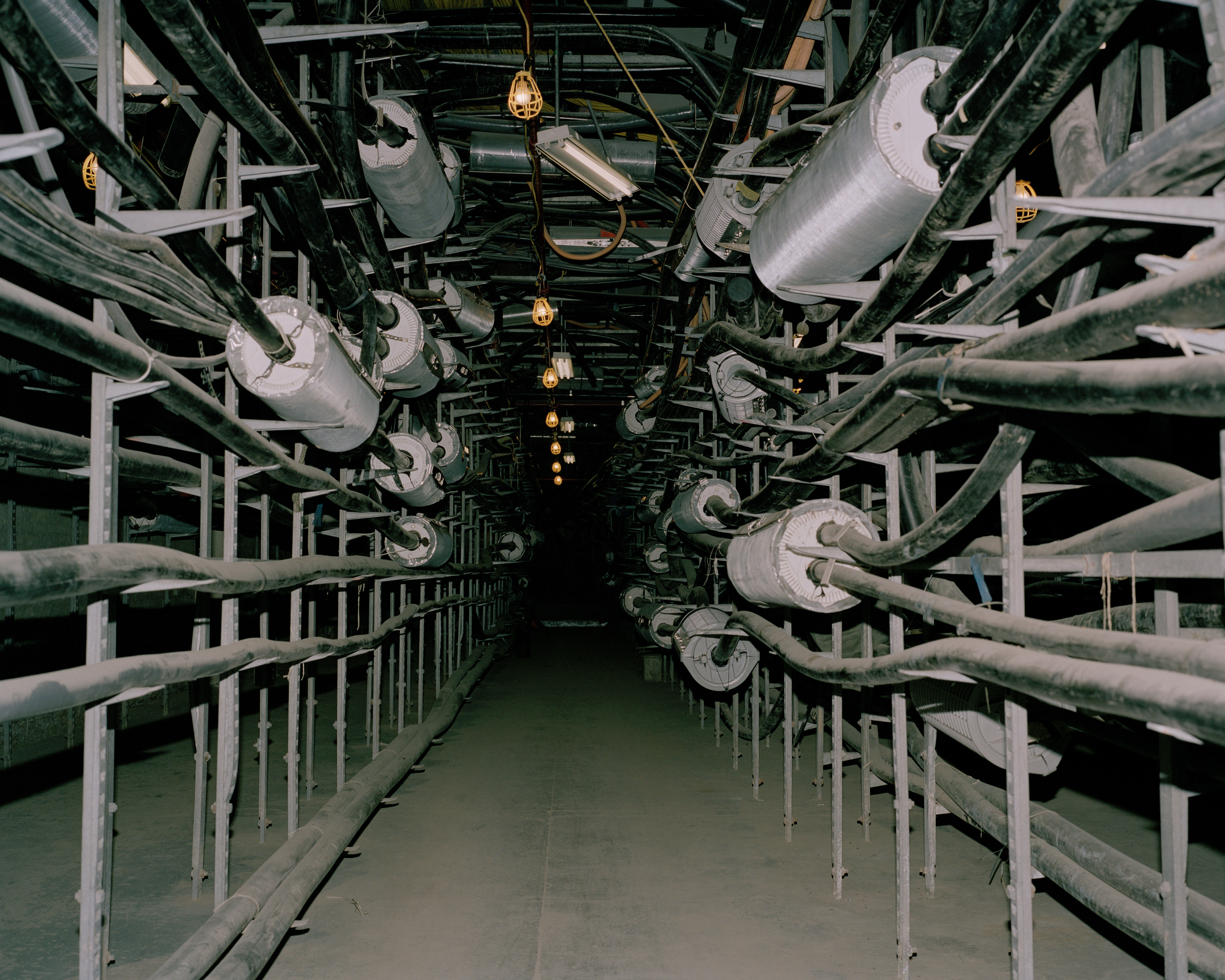
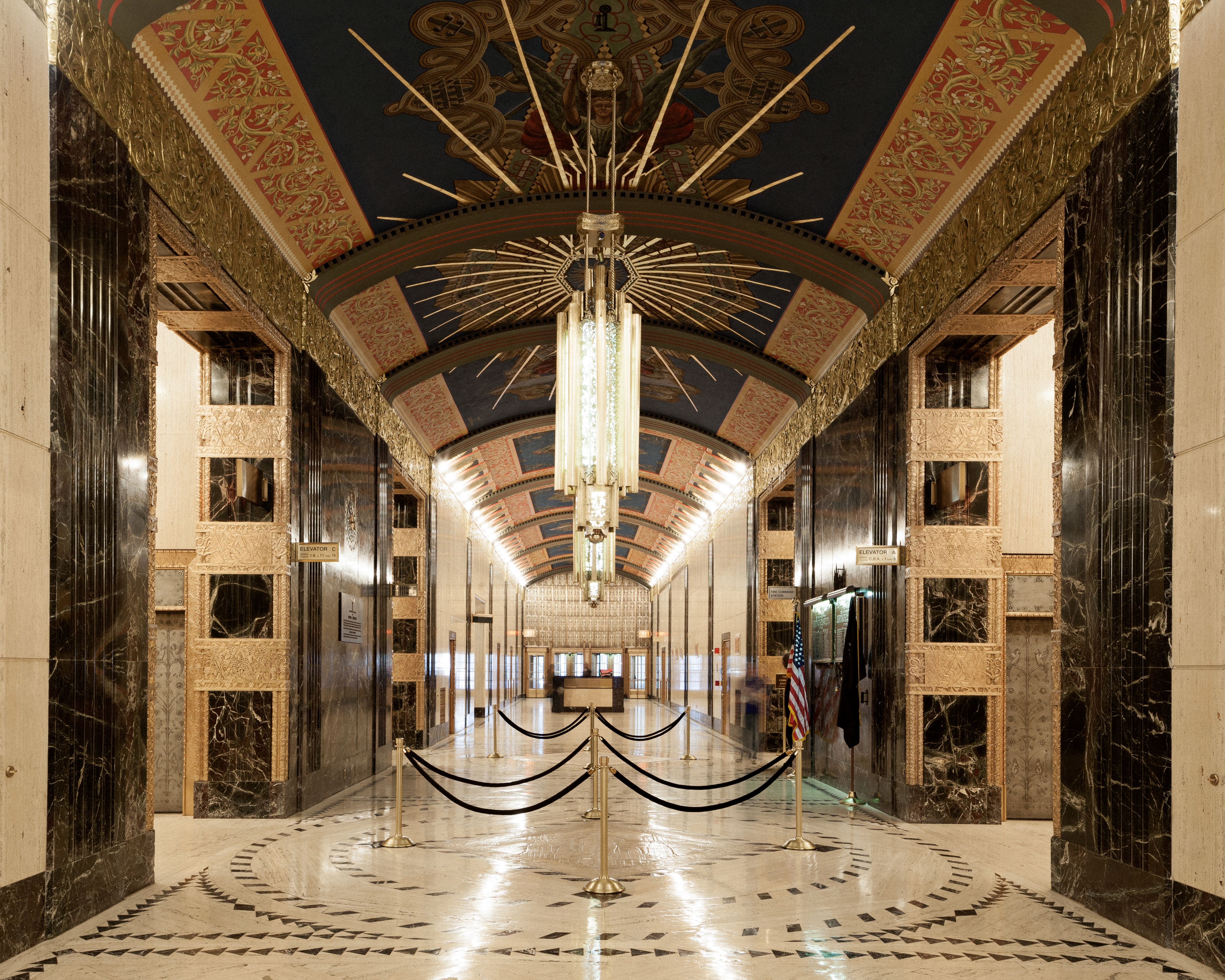
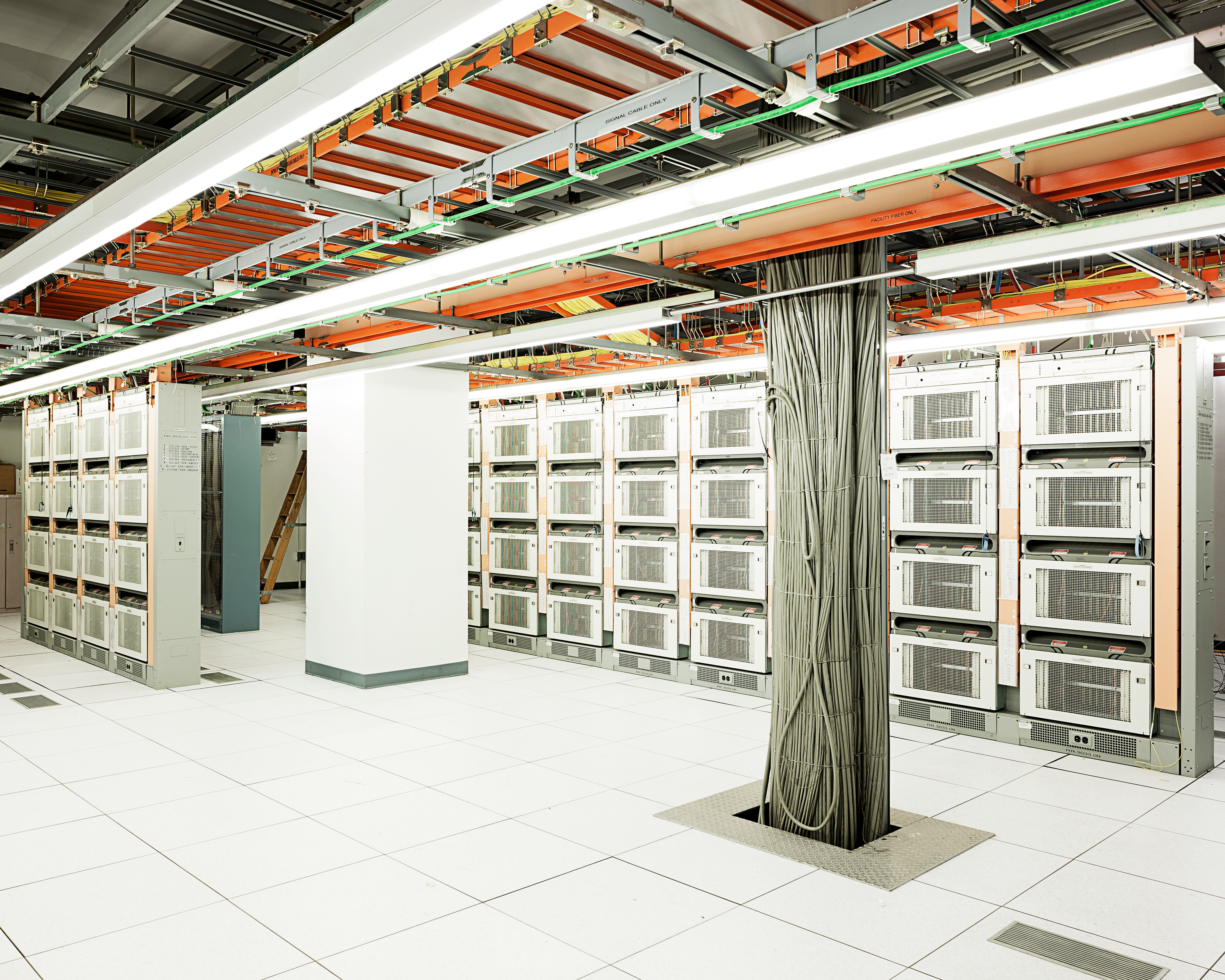
Fragments on Machines, HD video, 2013
HFT firms have physically moved to be as close as possible to the Internet’s infrastructure. The physically closer these firms are, the faster their algorithms can trade—much faster than our human capabilities. And so again there is this reference back to ‘productivity’, ‘speed’ and ‘time'. Naturally this work feeds into ideas associated with accelerationism but when i was making this work it was not with the intention of making work about accelerationism, but was a development of my previous works. Certainly in this work there is an observation or a comment on how machines may not emancipate the worker from the need to work but actually force out the need for labour power at all. Although it is important to say that the intention of this work was to shed light on how these theories manifest in real terms, in the physical world. The theoretical parameter functions as an axis around which the work develops during the process of filming or in the edit. None of my film works to this point are preplanned or storyboarded in terms of structure. It is an evolutionary process.
Correct me if I’m wrong, but there also seem to be recurring themes of the “hidden,” which you aim to reveal through your video works. Can you tell me more about this? What is the goal in unveiling that which is concealed, or alternatively, conceptually abstract (like the Internet, for instance)?
I think that being from London has unconsciously influenced what I choose to make work about. In the past, driving around London with my Dad, who is an electrician, he would often point out the electrical substations around the city. Some of them are often disguised in some way, like at the Elephant and Castle roundabout. This reflection on maintenance architecture as hidden structures is taken largely from those experiences with my Dad and so I suppose lay the foundation for my ongoing occupation with the unseen elements of urban systems. I think there is an inherent class politics to this as well that bubbles under the surface that I've never really articulated before. You have these audacious buildings in the city which are used by political and economic powers to impress and glorify and then you have this sort of functional maintenance architecture that my Dad would work in all over the city, that are anonymous and often underground and i think there is something interesting in the friction at play there.
In my more recent work, which has looked at technological infrastructures, this concern with the obscured or hidden recurs. But actually it is interesting that you refer to the Internet as conceptually abstract because that was the very notion I was trying to redirect in Fragments on Machines and more recently White Mountain (2016). The Internet has entered into popular consciousness as an ethereal space; a space with no location and no material entity. Terms such as ‘the cloud’, ‘cyberspace’ and ‘virtual reality’ are common figures of rhetoric in the context of digital culture which has in turn contributed to a dematerialisation of the subject.
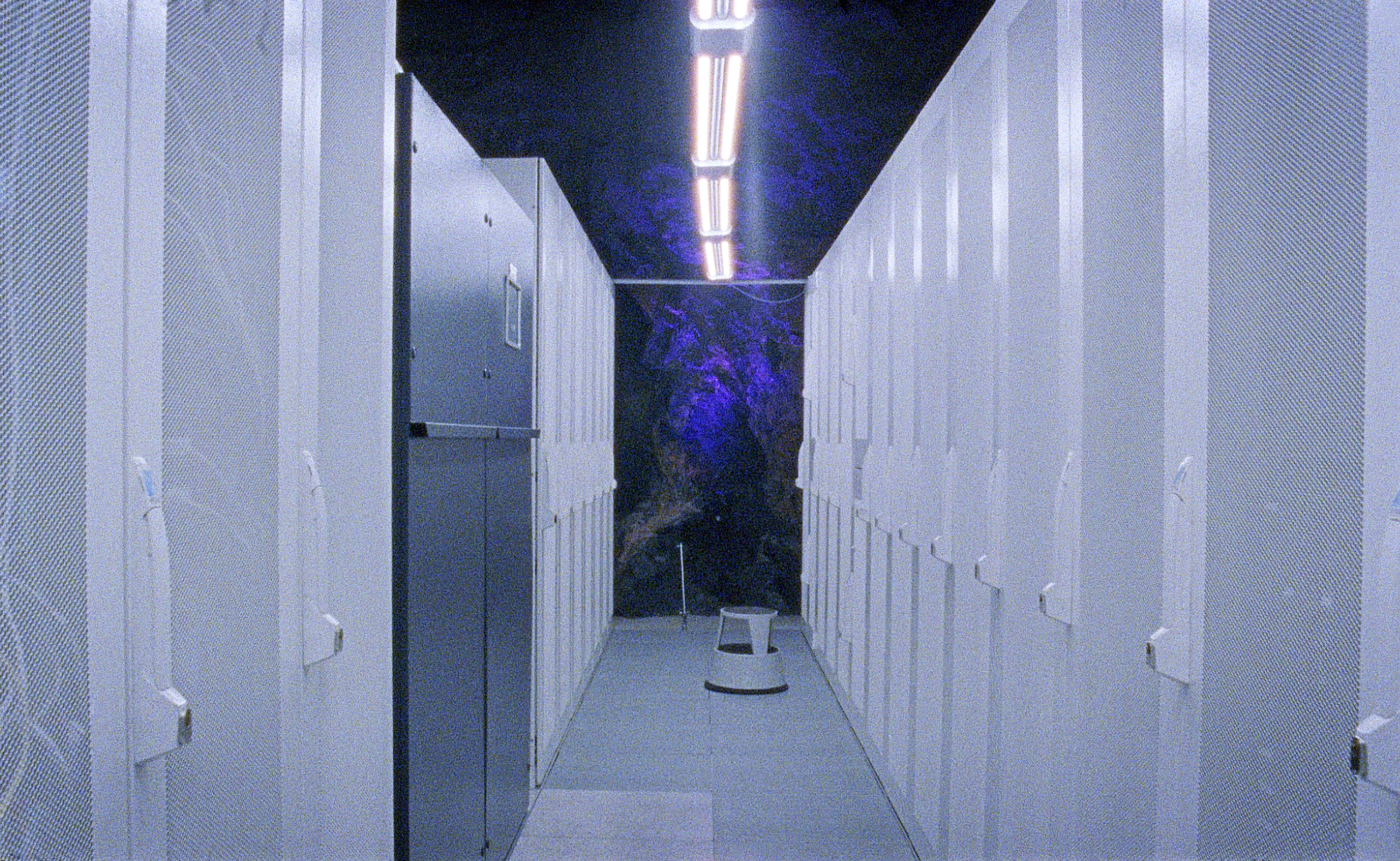
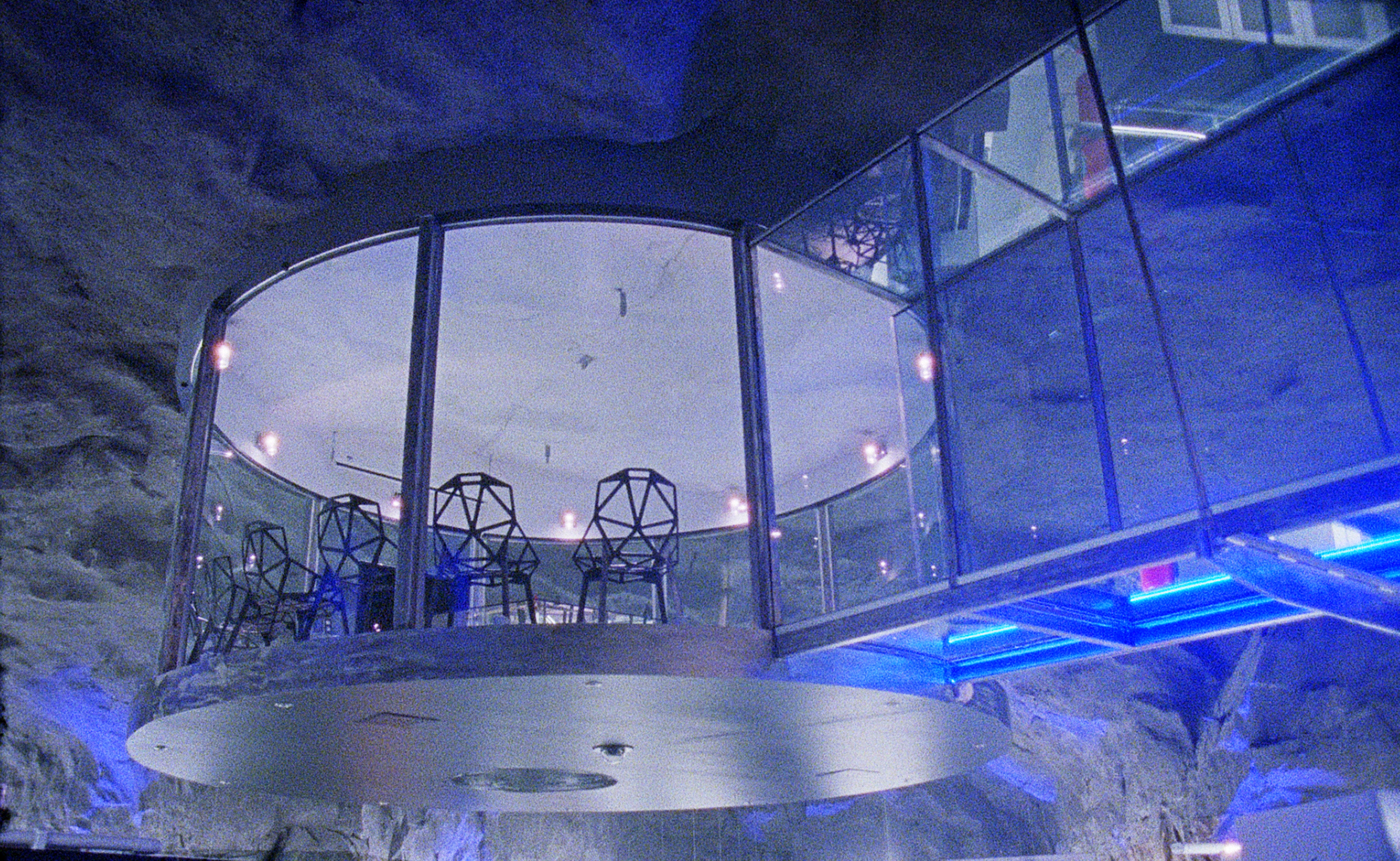

White Mountain, 16mm transferred to 2K video, 2016
However, the Internet is of course a very physical place. Hidden inside vast and often remote data centers, are the server stacks which drive the information age and the aim of both these works was to make that visible. White Mountain I think plays much more on the idea of the 'hidden' and relates to historical uses of technology in militarised contexts. White Mountain is a 16mm docu-fiction film set in and around the Pionen data centre, a former Cold War era civil defence bunker buried 30 metres under the granite rock of Vita Bergen Park in Stockholm. Redesigned into a data center in 2008 by architect Albert France-Lanord, Pionen has most notably house servers for the likes of Wikileaks and PirateBay. Starting by surveying the rough topography of the surrounding Södermalm landscape, the film gradually pushes beneath the surface, illuminating the ordinarily concealed network infrastructure. The hydrogen bomb proof subterranean hub has been constructed with direct references to science fiction films such as Silent Running, and has been inspired by classic set design by Ken Adam. Part Bond villain lair, part retro-futuristic spaceship, the film explores the temporal nature of data space and geology.
Informed by an understanding of media archaeology and working in collaboration with new media theorist Jussi Parikka, it makes visible a return to the underground as a kind of sanctuary for new technologies, aligning histories of cold war infrastructures and the technologies developed during this period with current communication systems of the present and speculative near futures. The film aims to make evident the link between digital devices, geological materials and deep time or geologic time. This location, housed inside granite rock formed millions of years ago which Stockholm is built upon and carved into, now becomes the container for hard-drives and computational systems on which information is stored, the very devices themselves being made up of metals, ores and rare earth minerals.
Sound was a very important part of this work and a medium that I am currently experimenting with much more. Sound is a really interesting device for making visible the structures of technology we cannot perceive visually which returns back to this idea of the ‘hidden’. Gathering vibrational and electromagnetic sound from the rock face above the data center as well as deep inside the server room itself, a soundscape has been created both revealing and processing the reverberations of the hidden environment.
Tell me about your latest project, and how you think it relates to the trajectory of your practice in general.
At the moment I am making work about electricity. I am interested in exploring how we navigate the physical realm of infrastructure space while at the same time examining the varying forms of material invisibilities that are produced by these very infrastructures. When we consider contemporary communication systems such as wifi and other wireless media it is situated within a space not definable by traditional means in which a hard boundary or physical matter can be determined, but extends beyond into the geophysical realm of the electromagnetic spectrum.
This space, thought of as the ‘hertzian space’ is ‘the interface between electromagnetic frequencies and human experiences’ as described by critical designer Anthony Dunne. He construes that ‘whereas cyberspace is a metaphor that spatialises what happens in computers distributed around the world, electromagnetic radio space is actual and physical, even though our senses detect only a tiny part of it.’ Although invisible and intangible to human senses, this seemingly abstract infrastructure space formed by technological systems are very much grounded in our reality.
By observing how we can trace the legacy of communication infrastructures, which utilise frequencies on the electromagnetic spectrum, back to military technologies developed during the Cold War period, the research explores the continuity and imperceptible consequence of technology from radioactive decay to the hertzian space of electronic devices.
One such audiovisual work which will reflect upon this research is When Objects Dream (2018), co-directed with Ben Evans James and will focus on Kazakhstan, follows the journey of technology from the mineral rich earth of the Kazakh steppe to the brand new capital city of Astana. Some locations include a coal mine, a decommissioned nuclear test site, power station and high-voltage electric line running through Kazakhstan.

When Objects Dream, 16mm transferred to 2K video, 2018
Again sound becomes a significant element in the conceptual trajectory of the film. Using radio atmospheric signal recorders to capture the natural sound of the earth as well as coil mics to record electromagnetic frequencies emitted from technological devices, these tools provide access to an invisible layer of reality.
-
Emma Charles (b.1985) is a London-based artist. She holds an MA in Photography from Royal College of Art. Charles has exhibited and screened at Jerwood Visual Arts, London; Serpentine Galleries, London; ZKM, Karlsruhe; HKW, Berlin; Jeu de Paume, Paris, LUX and ICA, London and is the recipient of a 2015, 2017 & 2018 Arts Council England award, Elephant Trust fund, ZKM commission and has been published in ‘Reset Modernity!’ edited by Bruno Latour (MIT Press).
Upcoming exhibitions and projects in 2018 include London Nights at Museum of London, Open Codes at ZKM, and Machines will watch us die at Holden Gallery, Manchester. She will be returning to Kazakhstan to continue with her recent project When Objects Dream, as well as onto New Mexico in May to research further into nuclear legacies.
-
If you like this why not read our interview with Alfie Strong
-
© 2013 - 2018 YAC | Young Artists in Conversation ALL RIGHTS RESERVED
